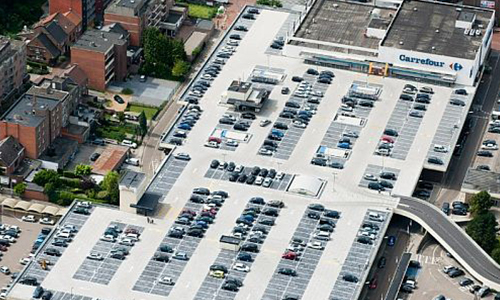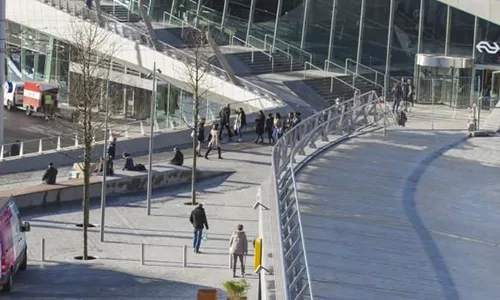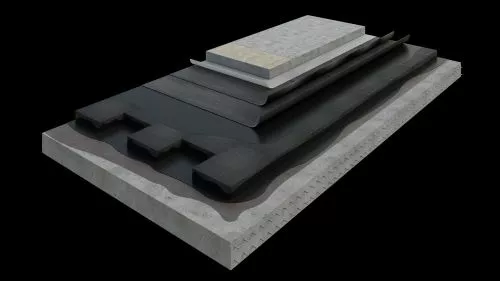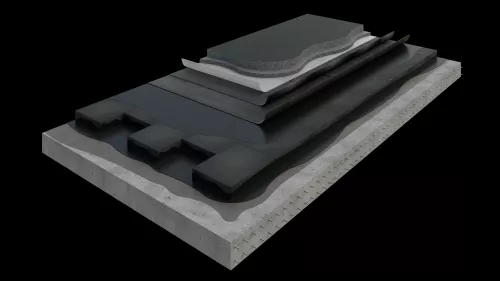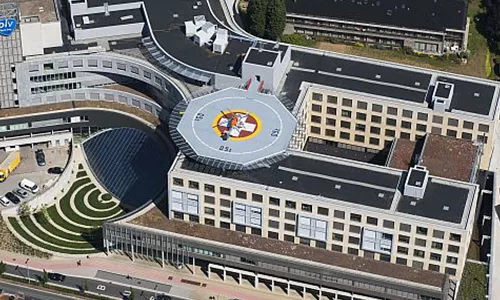Parking roofs
Types, advantages and possibilities
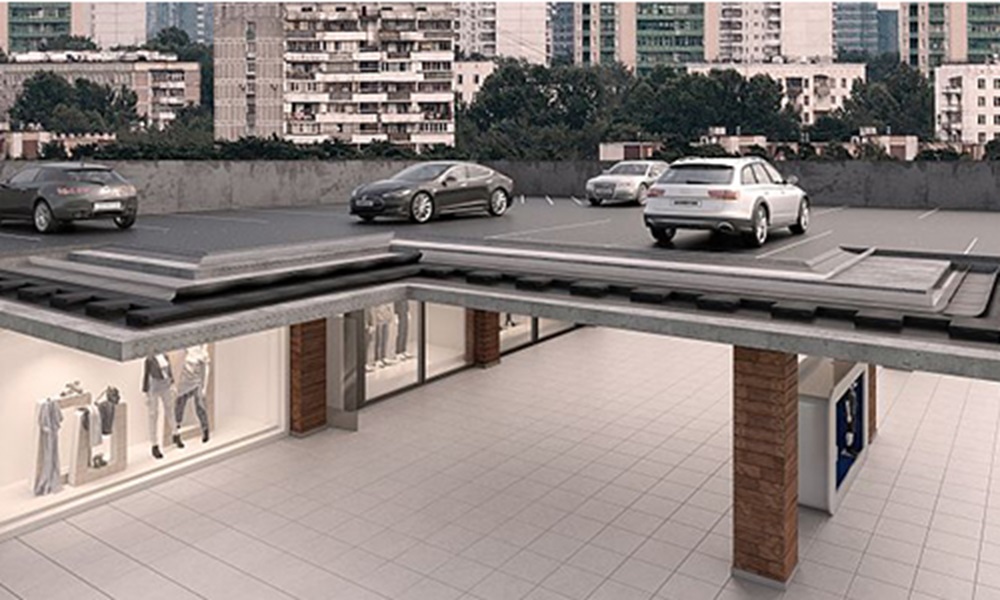
In light of the diminishing availability of land space, the search for expansion options has become challenging. The conversion of a flat roof into a parking space for bicycles, cars, or heavy loads presents a promising solution to address this need.
A lot of undeniable benefits
The key advantage of a parking roof is its ability to optimize the available space and the use of a building. Secondly, it enhances the overall value, resulting in higher rental or sale prices. Parking roofs also provide an easy and safer way to park your bicycle, car, or truck compared to the street.
Underground garages can be avoided, making room for more appropriate applications and preventing costly underground constructions.
Parking roofs can be constructed in diverse locations, including shopping centers, office buildings, hospitals, and residential buildings. They apply to both new-build and existing, unexploited constructions! They contribute to low-traffic streets and cities, creating a more beautiful, healthier, and valuable environment.
Selecting the appropriate insulation for these roofs is crucial to achieve optimal performance.
The options
The possibilities with parking roofs are determined by the function and finish of the roof, which opens up a wide range of options. However, it is important to consider certain risks associated with these choices.
Enhancing performance and versatility
for pedestrian and bicycle accessible roofs
When it comes to a roof used by cyclists and pedestrians, no shortcuts can be taken. Ensuring everyone's safety provides added peace of mind. The most important factor to be considered here is that the flat roof must be completely watertight and durable.
The dynamic forces exerted by bicycles may cause damage to the surface and waterproofing, leading to water penetration. It is crucial to prevent deterioration and degradation, which can result in deformations and uneven surfaces, requiring expensive and inconvenient repair work.
To address this, various types of finishing materials can be utilized for this accessible roof type, allowing for an adapted solution:
- Paved roof
- Concrete finish
- Timber walkway
- Asphalt waterproofing
- Podium deck
- Mastic asphalt
Seamless integration of the insulation with various types of roofing materials is a necessary condition to create a robust and high-performing roof structure.
Ultimate strength and safety
for vehicle-accessible roofs and heavy-duty roofs
Roofs that are accessible to vehicles and endure heavy loads place significant demands on their compressive strength. This is especially true for parking roofs, which must bear additional loads compared to unused flat roofs. There are numerous types of parking roofs found in office and retail spaces, as well as multistory car parks.
These loads encompass various factors, including:
-
Loads from the driving layer and traffic.
-
Stresses resulting from braking, acceleration, and force distribution in curves.
-
Forces at the transition points between different floor slabs or joints in the pressure distribution plate.
-
Deformations of the concrete top layer due to temperature fluctuations.
-
Stresses at areas of cracks in the pressure distribution plate, which may occur due to missing or insufficient joints.
-
Loads on the waterproofing due to deformation.
-
Loads on the waterproofing during the construction phase, such as during concrete work.
-
Tension between the edges of the lining and upright structural components.
One notable application for FOAMGLAS is in emergency services, specifically in facilitating helicopter landing pads and railway stations. The demanding requirements in terms of compressive strength have resulted in the realization of numerous applications.
These diverse potential loads highlight the importance of selecting optimal waterproofing and thermal insulation for parking roofs. Vehicle-accessible roofs can benefit from various types of finishing materials, offering customized solutions such as:
- - Concrete driveway
- - Paved driveway
- - Asphalt driveway
- - Mastic asphalt driveway
The same types of materials can also be used for heavy-duty roofs. The objective is to find a solution that can withstand heavy loads without the risk of deformation. Roofs that are accessible to vehicles necessitate a construction capable of enduring high pressure.
Mitigating risks in parking roof construction:
the advantages of FOAMGLAS Compact Roof
Let’s explore the numerous advantages of using FOAMGLAS® Compact Roof as the ultimate solution for a safe and reliable parking roof. With its exceptional properties and innovative design, FOAMGLAS® Compact Roof offers unparalleled protection against potential risks, ensuring peace of mind for building owners, occupants, and construction professionals alike.
- Superior waterproofing
FOAMGLAS® Compact Roof features a fully enclosed and homogeneous insulation system, ensuring exceptional resistance to water and moisture. Its seamless design eliminates open joints and seams, effectively safeguarding against water infiltration. This protects the structural integrity of the roof, preventing leaks and potential damage. - Robust load bearing capacity
In parking roofs where vehicles are parked, the ability to withstand heavy loads and pressure is paramount. FOAMGLAS® Compact Roof excels in this regard. With options like FOAMGLAS S3 (compressive strength of 90 tons/m²) and FOAMGLAS® F (compressive strength of 160 tons/m²), the insulation package is tailored to meet specific load requirements. The strong and durable insulation material effectively withstands the pressure exerted by heavy vehicles, ensuring the roof surface remains intact without cracks or damage. - Exceptional fire and heat resistance
FOAMGLAS® Compact Roof is inherently fireproof and exhibits remarkable resistance to high temperatures. Classified as non-combustible (fire class A1), it can endure temperatures of up to 1000 degrees Celsius. This outstanding heat resistance ensures that the roof remains resilient in the face of fire and extreme temperatures.


